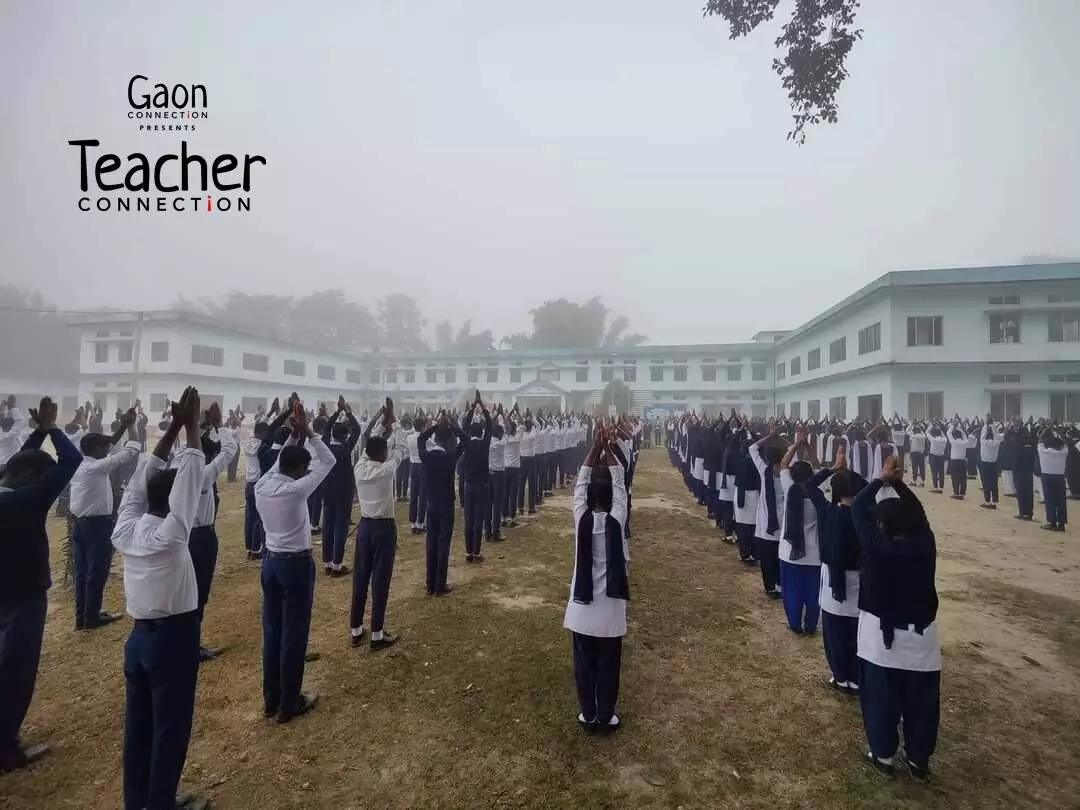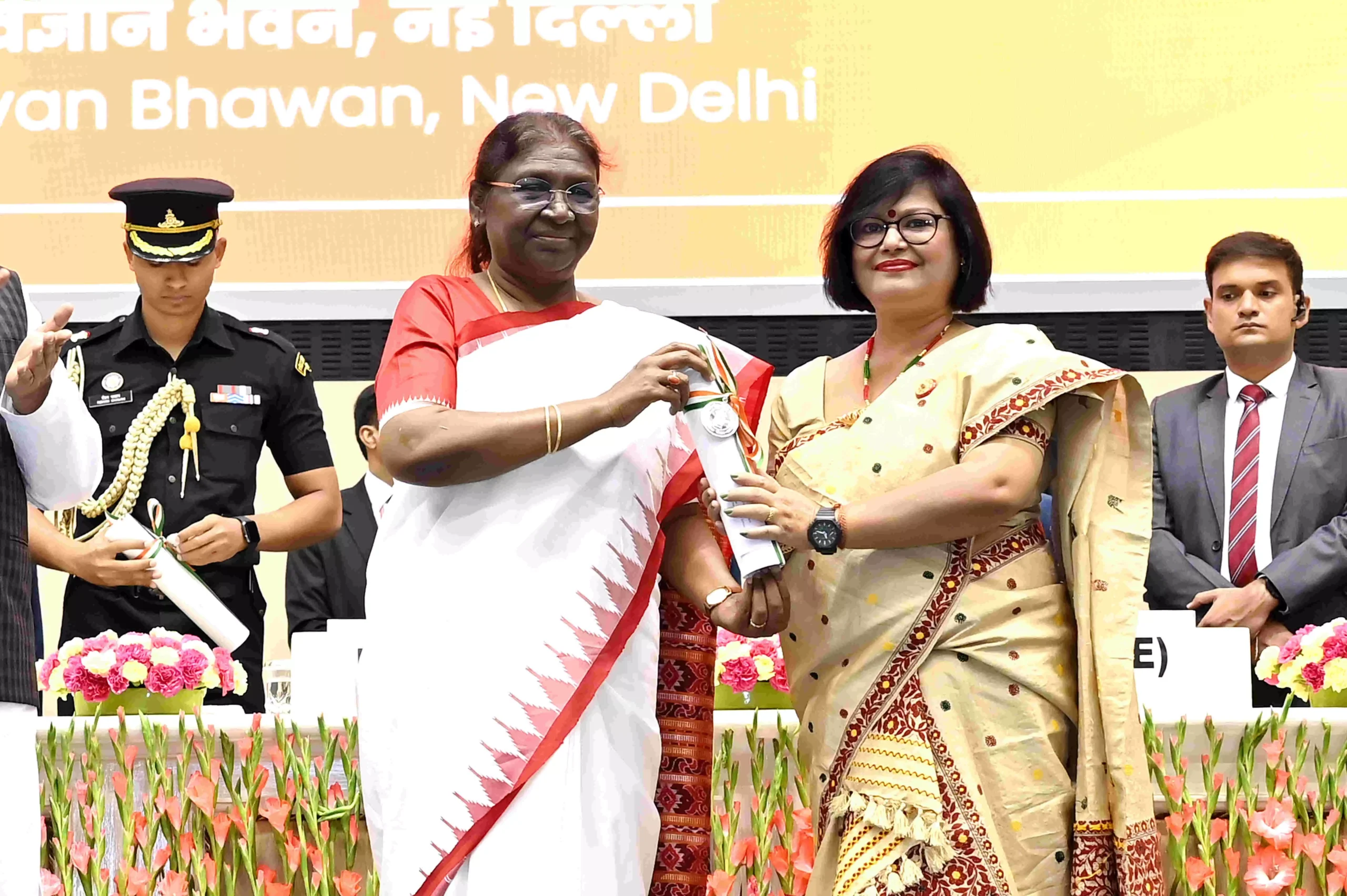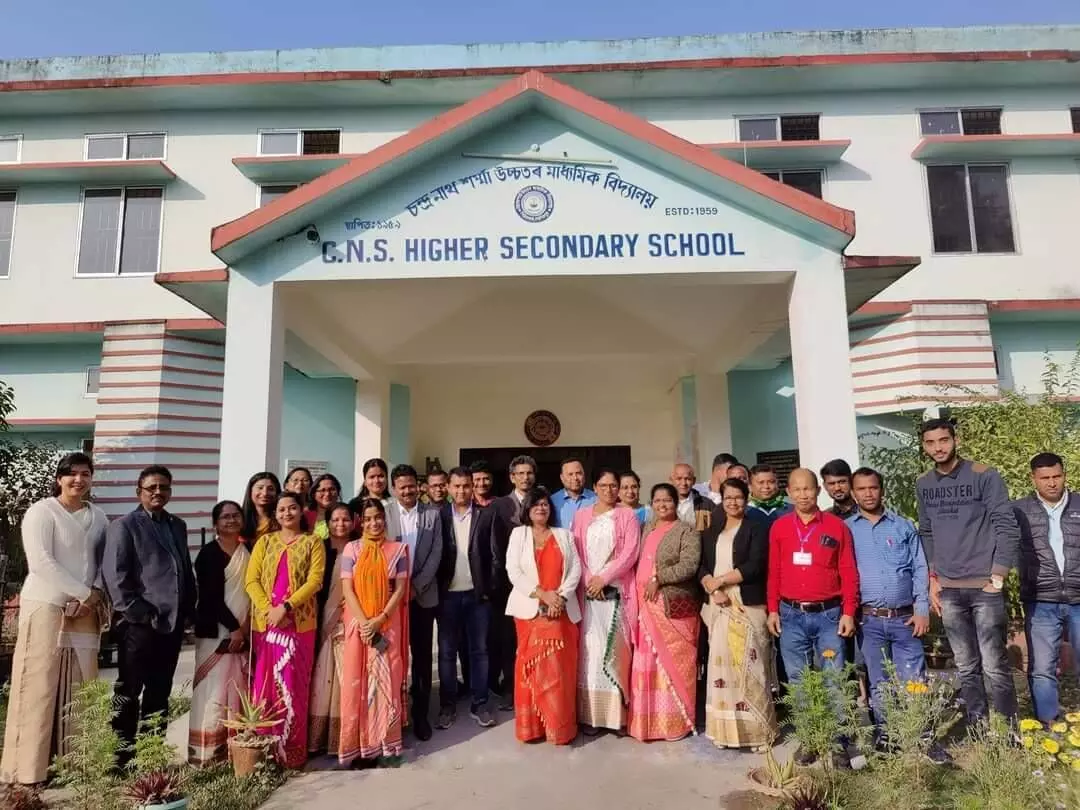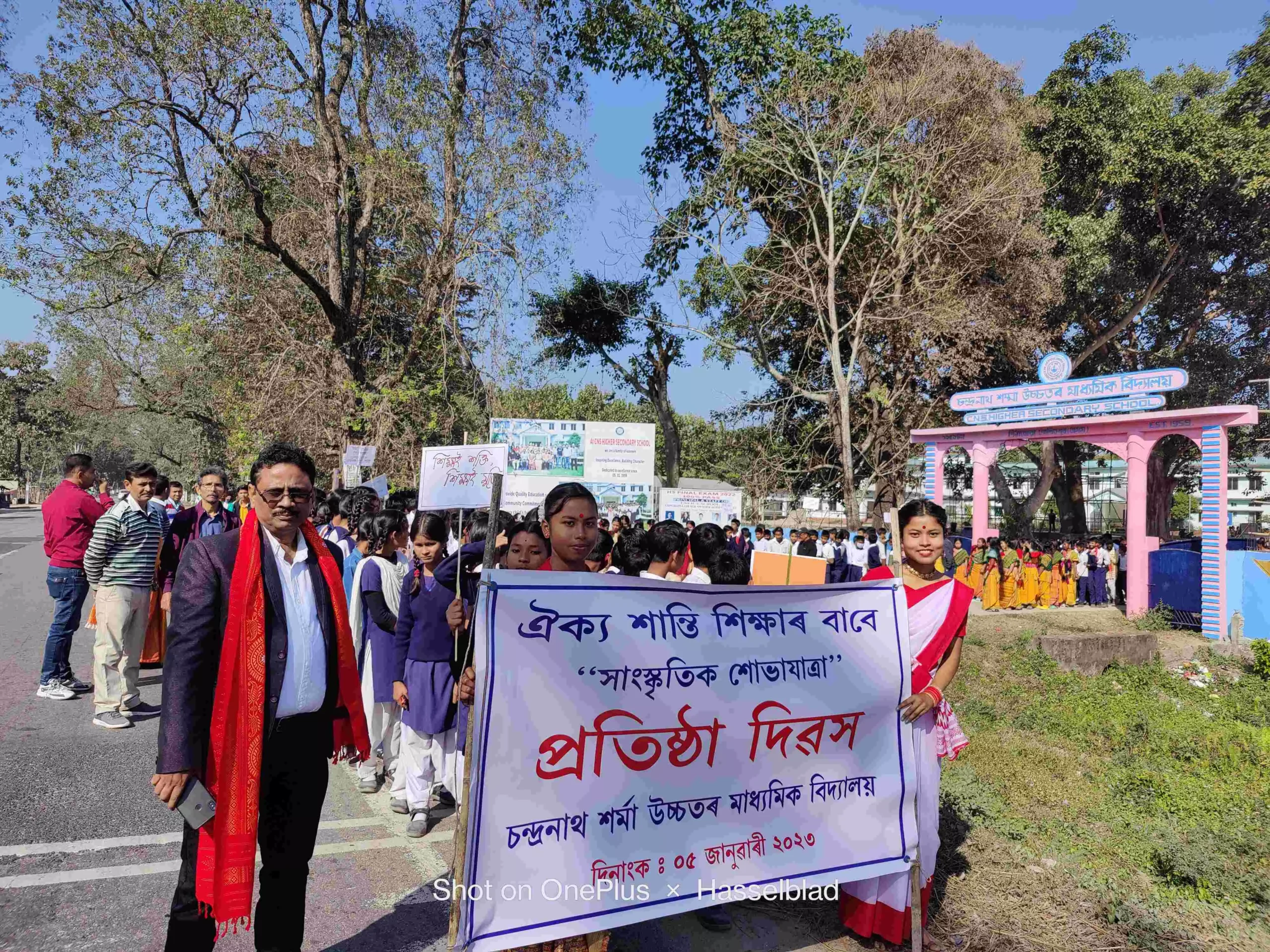Guwahati, Assam
On April 14, last month, more than 11,000 dancers and drummers gathered at the Sarusajai Stadium in Guwahati. They had come from across Assam to participate in the Guinness World Records for the Largest Bihu Dance, the northeastern state’s traditional folk dance. It was a celebration of the state’s most popular harvest festival, Bohag Bihu.
Amid the thousands of performers, seven young participants were students of a rural government school in Pithakhowa village of Sonitpur district located over 220 kilometres from the venue. As the drummers played the traditional dhol, dancers erupted into an electrifying performance of Bihu accompanied by the thunderous applause by the audience.
Sixteen-year-old Chayanika Devi was one of the performers from Chandranath Sarma Higher Secondary School of Pithakhowa village. “It was an out-of-the-world feeling to take part in such a prestigious event. Never in my dreams did I think I would dance in front of Prime Minister Narendra Modi. I will cherish the moment throughout my life,” she told Gaon Connection.
Monjit Nath, another 14- year-old student of the village school, played the drums at Guwahati. “It was an amazing experience. The cultural exposure I got in school has helped me a lot to keep up with other expert drummers at the event,” he said.
Like Chayanika and Monjit, almost all of the 850 students of Chandranath Sarma Higher Secondary School, are soaked in the culture and traditions of their state.

Also Read: A teacher brings glory to the Mewati language
Apart from traditional dance and music, the students also regularly try their hands at Assamese delicacies such as the pitha (a traditional pancake).
And the credit for all this goes to Meenakshi Goswami, the principal of the school. “All you need to be a teacher is a heart filled with love for children,” 59-year-old Goswami told Gaon Connection.
It was in 1989 that Goswami, a convent educated girl born and brought up in Shillong, the capital of the neighbouring state Meghalaya, decided to join the government school as an English teacher. It raised eyebrows and many people called it a silly move, but Goswami was undeterred.
All she wanted to do was provide a good education to the children of rural Assam. She was determined to bring about positive changes in the school, which, back in 1989, lacked infrastructure and had a high dropout rate.

Meenakshi Goswami receiving her award from President Draupadi Murmu.
Today, there are more than 850 students enrolled in Chandranath Sarma Higher Secondary School, all coming from BPL (Below Poverty Line) families.
Also Read: A village school where children fly model aircraft and dream about becoming scientists
Rooting for culture and tradition
Besides shoring up the infrastructure, Goswami has, in the past 34 years in the school, ensured the students who came into her school continued to be rooted in their ethnic culture and tradition.
“Assam is known for its vibrant culture and traditions, apart from Assamese, Nepali, and Bengali people, the state is also home to a large number of indigenous tribes such as Bodo, Tiwa, Rabha, Mising, Karbi and Dimasa,” said the principal. “I have always maintained that while the children are updating themselves and keeping up with the modern changes, they should not forget their own roots,” she added.
In 2014, Goswami along with the then Principal Mukul Chutia started Prag Bhogali Utsav at the school. “Children participate with great enthusiasm in the two-day festival. From making traditional Assamese food to walking the ramp wearing traditional wear, they did everything,” she said.
Since then, there has been no looking back.
Almost every student in the village school knows how to play the traditional dhol, pepa and gogona. These musical instruments are fast disappearing.

The teachers of the school have created a student welfare fund to which every teacher contributes Rs 100 every month. This fund is used to purchase sweaters, shoes, dresses for the students for cultural functions.
“Cultural activities are not just for entertainment purposes, they are being used as a tool to imbibe moral values amongst the younger generation. Last November, we performed Bihu with the theme — advantages of a joint family,” Goswami explained.
Also Read: It is K for ‘Kathak’ at this government primary school in Raebareli, UP
Enabling girls’ education
Popularising Assamese culture isn’t the only thing to Goswami’s credit. In May 2017, when she became the principal of Chandranath Sarma Higher Secondary School of Pithakhowa village, almost right away, she broke a 58-year-old tradition of the boys-only school. The village school, which was established in 1959, had only boys studying in it till 2017.
Goswami began to take in girls between classes 6 and 10. Earlier girls from other schools joined Chandranath Sarma Government Higher Secondary School only in classes 11 and 12. Now there are almost as many girls as there are boys in each class. A large number of them travel long distances, sometimes more than 15 kilometres to get to the school.
“Since childhood I have heard only good things about the school and I always wanted to study there. However, that was not possible because there were only boys in the secondary section. But, my wish came true when the school began enrolling girls from class 6 to 10,” Hiya, who joined the school in class 7, told Gaon Connection.
Hiya was one of the earliest girls to join when the principal threw open admissions to girls too.

Cultural activities are not just for entertainment purposes, they are being used as a tool to imbibe moral values amongst the younger generation.
Also Read: A taste of success with Assam tea
Pleased parents
“Due to lack of enough money, we could not send our son to a private school. But, he has been studying in this school since class six and we have no regrets whatsoever,” Bhanjana Devi, mother of Tanmoy Bora, a Class 10 student, told Gaon Connection. “My husband and I are very happy that our son is receiving such a good education as well as moral values,” she said.
Munindra Kumar Nath is a teacher at Chandranath Sarma Higher Secondary School and he did not think twice about pulling his son out of a private school and enrolling him at the village school, where he is in the tenth standard.
“I feel blessed that my son is studying in a school where I too studied many years ago. I passed out in 1987. Be it infrastructure, teacher-pupil ratio or cleanliness, this school is no less than any private school,” said the teacher. “It is because of the dynamic administration of Meenakshi Baideo whose efforts to promote Assam’s ethnic culture and traditions are really commendable,” he added.
The teachers of the school have created a student welfare fund to which every teacher contributes Rs 100 every month. This fund is used to purchase sweaters, shoes, dresses for the students for cultural functions. It also provides medical support to the students and their parents if required.
“The welfare fund is a step towards providing relief to the parents. Most of the time the good performers are sponsored by the school for higher education,” Nripen Nath, a former student, now a colleague of Goswami, told Gaon Connection.
Goswami was conferred with the National Teacher Award on Teachers Day 2022. “I am very attached to my students, they are my everything. It is their blessings that has made me what I am today, and for that I can’t thank them enough,” she said.




















